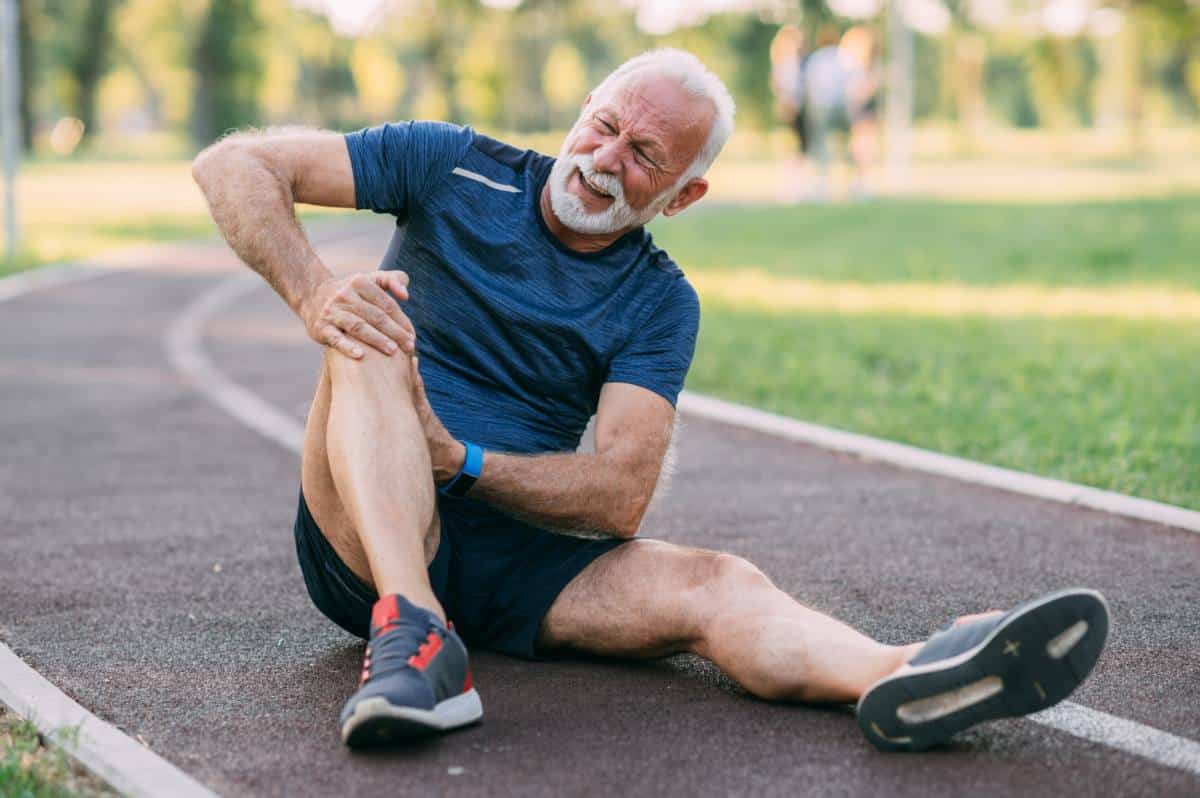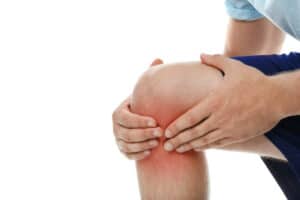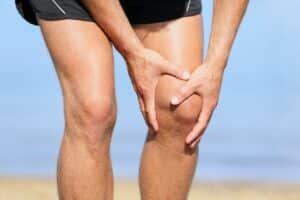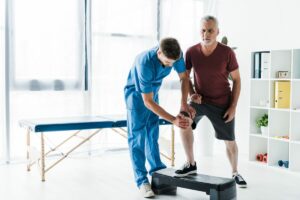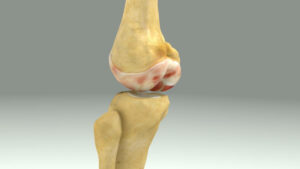Free download: Top 10 Natural & Easy Remedies for Joint Pain from Home. Learn these helpful remedies.
Estimated Reading Time: 7 minutes read
Are you a senior who loves to hit the pavement or the trails for a good run? Great news! According to a study published in the Journal of Aging and Physical Activity, regular physical activity can help improve physical function, mental health, and overall quality of life in seniors.
However, listening to your body and taking steps to prevent injuries, such as the runner’s knee, is essential.
Patellofemoral pain syndrome, another name for runner’s knee, is a common condition affecting seniors who enjoy running or other high-impact activities.
It is characterized by pain and discomfort around the kneecap, especially when walking up or down climbing stairs, squatting, or spending extended periods sitting with bent knees.
If left untreated, a runner’s knee can interfere with your ability to perform your daily activities and enjoy your favorite sports.
But don’t worry; a runner’s knee is a treatable condition that can be prevented with simple steps. This article will cover the symptoms, causes, and treatment options for a runner’s knee and some prevention tips for seniors.
Symptoms of Runner’s Knee
The most common symptom of a runner’s knee is pain around the kneecap, especially when walking up or down stairs, squatting, or sitting with bent knees for a long time. Other symptoms may include:
- Pain when bending the knee
- Swelling or tenderness around the kneecap
- Knee movement that causes a popping or grinding sensation
Causes of Runner’s Knee
Several factors can increase your risk of developing runner’s knee, including:
- Overuse or overexertion: Doing too much too soon, such as increasing your running distance too quickly, can put extra strain on your knees and lead to a runner’s knee.
- Weak leg muscles: Weak thigh and hip muscles can cause the kneecap to move out of its normal alignment, leading to pain and discomfort.
- Poor running form: If your feet roll inward or outward too much when you run, it can cause extra strain on your knees.
- Wearing shoes with poor support: Shoes that need more cushioning or support can increase the stress on your knees when you’re running or exercising.
Here are some tips for treating and preventing runner’s knee as a senior:
Treatment Options for Runner’s Knee
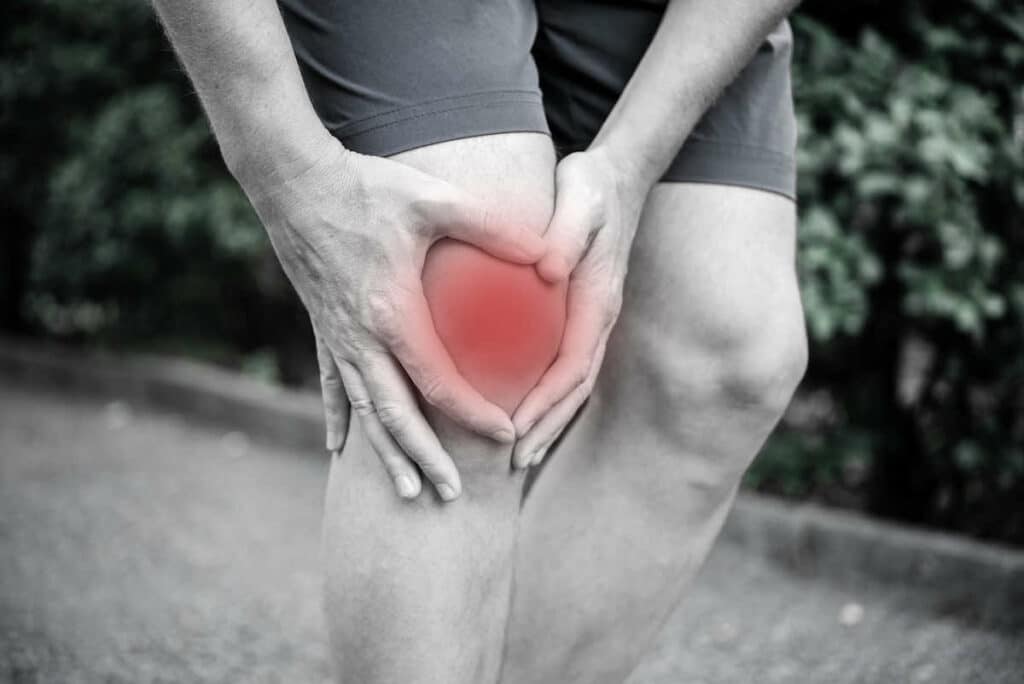
1. Rest and ice: When you first start experiencing a runner’s knee symptoms, taking a break from running and other high-impact activities are essential. You can also apply ice to the affected area for 20 minutes several times a day. This will help reduce inflammation and pain.
2. Wear the right shoes: Wearing shoes with proper support and cushioning can help reduce the stress on your knees when you’re running or exercising. Look for shoes designed for your foot type and the activity you’ll be doing.
3. Use orthotic inserts: If your feet roll inward or outward too much when you run, it can cause extra strain on your knees. Orthotic inserts, which can be placed inside your shoes, can help correct your gait and take some pressure off your knees.
Exercise & Stretches
1. Strengthen your muscles:
Weak muscles, especially in the thighs and hips, can contribute to a runner’s knee. To strengthen these muscles, try doing bodyweight exercises such as:
a. Wall Squats:

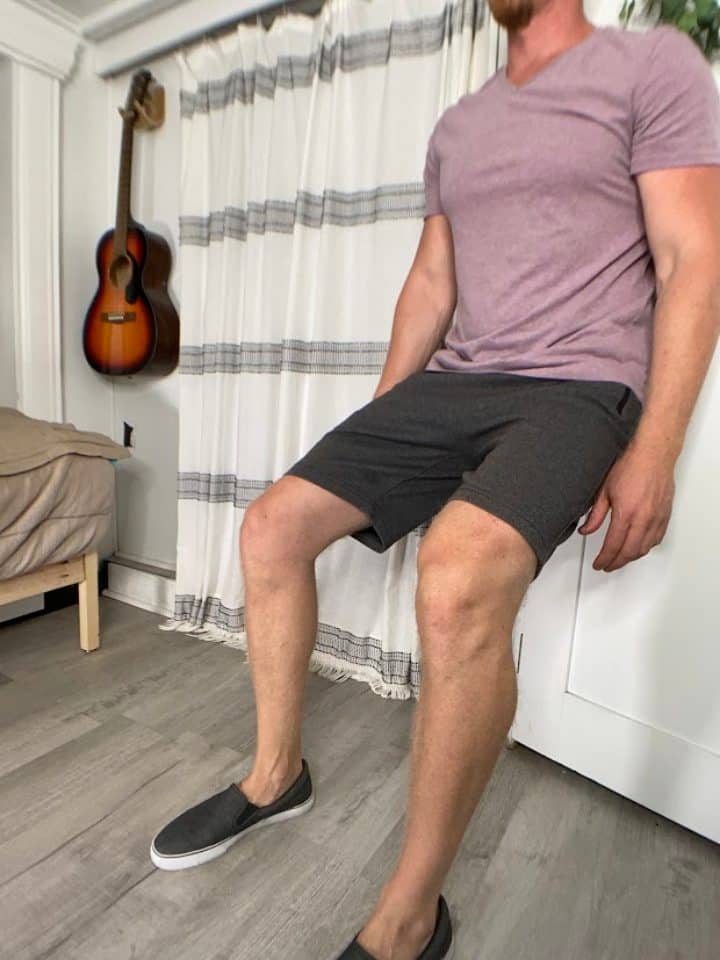
- Stand with your back against a wall and the feet slightly in front of you, leaning against the wall.
- Slowly bend the knees and slide down the wall into a squat.
- Make sure your knees don’t go past the toes and are in line with the ankles.
- Avoid squatting deeper than a 90 degree angle at the knees.
- Hold for 2 seconds.
- Push yourself back up to your starting position.
- Repeat 10-15 repetitions for 2 sets.
b. Lunges:
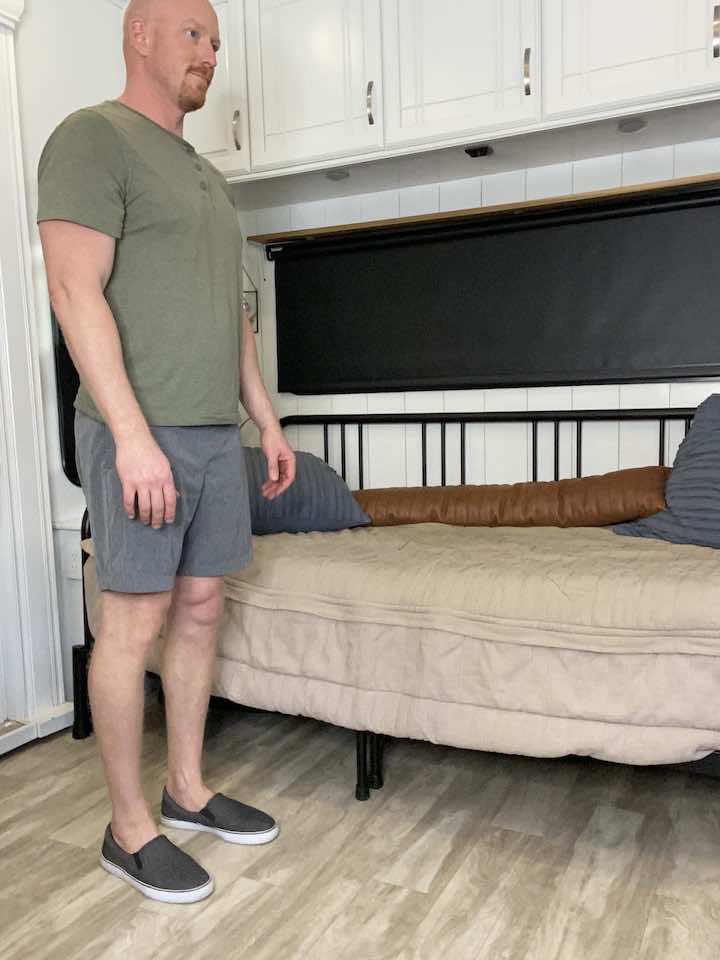
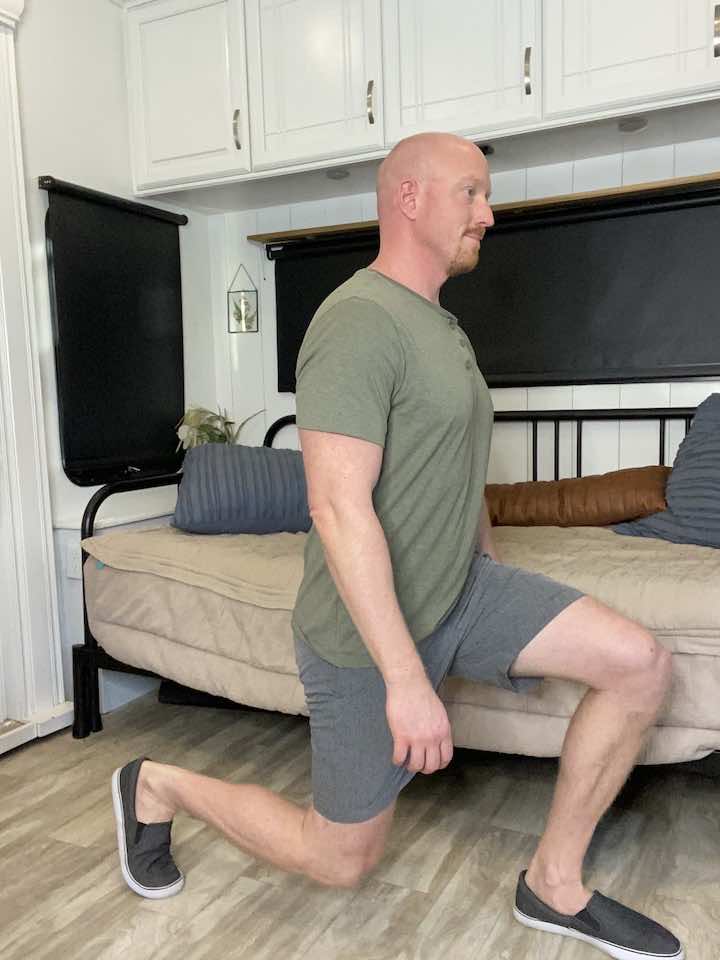
- Stand with your feet hip-width apart.
- Step forward with one foot and lower your body until your thigh is parallel to the ground.
- Push through the heel of your front foot to return to the starting position.
- Do 3 sets of 8-12 reps on each side.
c. Long Arc Quad:
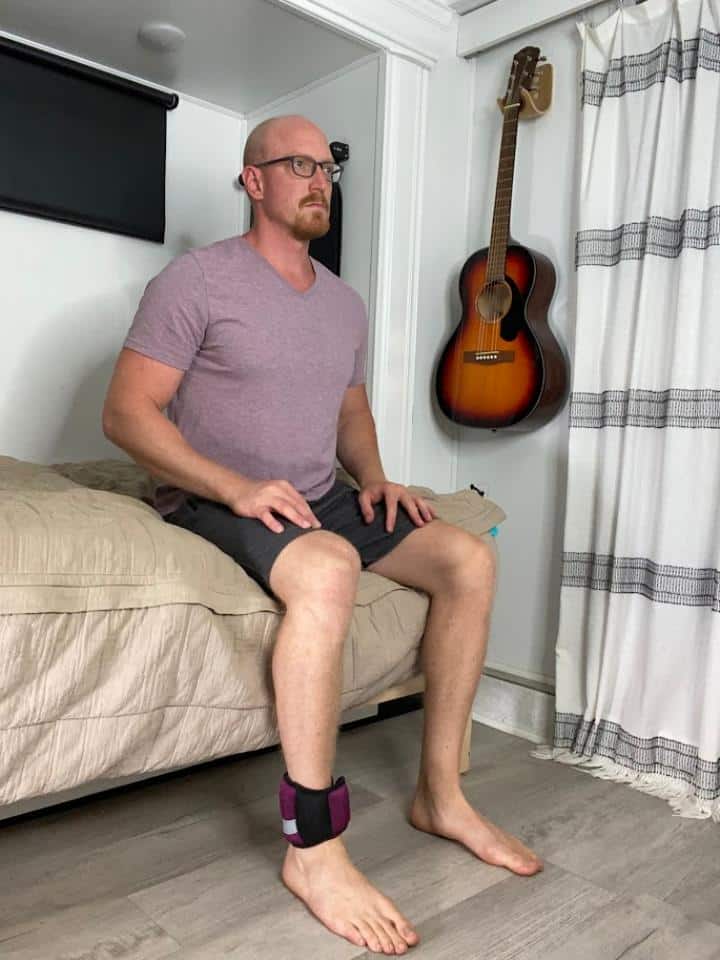
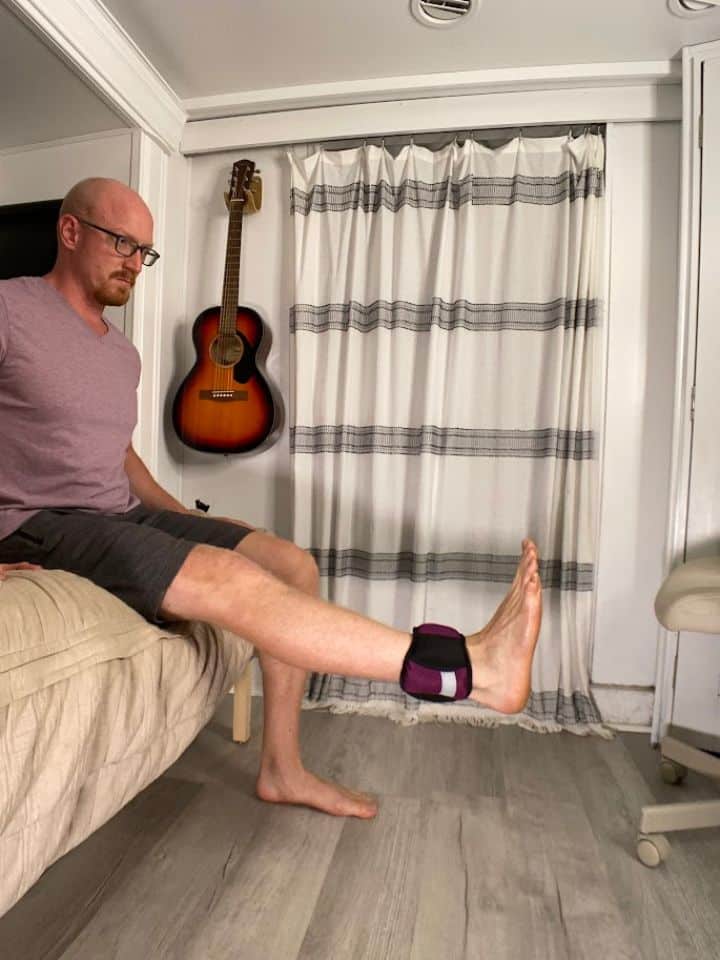
- You can perform this at home using an ankle weight (2-5#, as tolerated) or a resistance band tied around the ankles (light, medium, or heavy resistance).
- Begin seated in a chair with the feet flat on the floor.
- Kick the foot up off the floor and allow the knee to fully straighten.
- Hold for 2 seconds, then slowly return to your starting position
- Repeat 10-15 repetitions for 2 sets.
- Perform on the opposite leg for even symmetry.
2. Stretch before and after exercising:
Stretching before and after you run can help improve your flexibility and reduce your risk of a runner’s knee. Focus on stretches for your thighs, hips, and calves.
a. Supine Quadriceps Stretch:
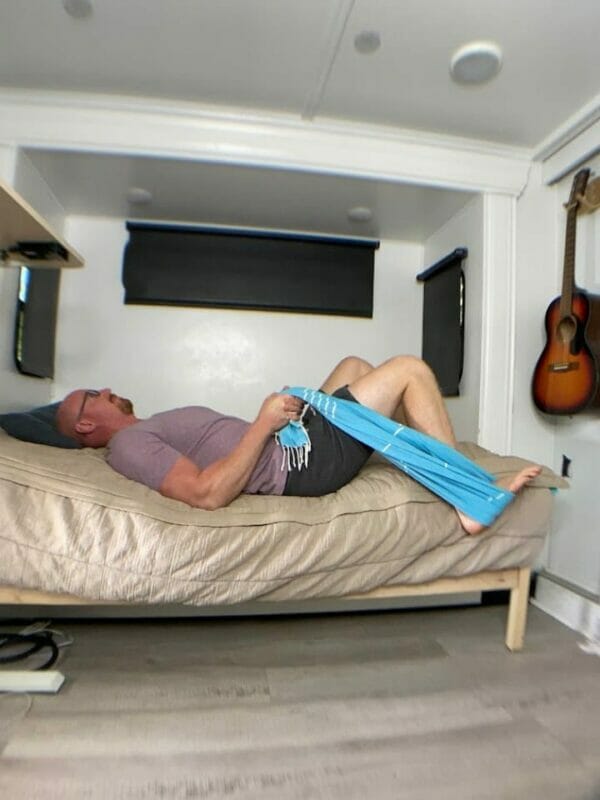
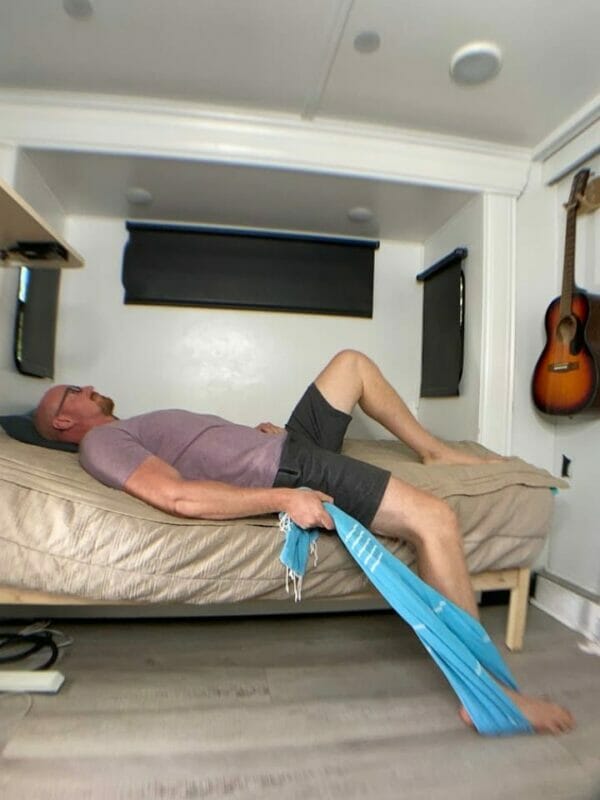
- Strap a non-elastic strap around the foot on the injured side.
- Lying down on the edge of your bed, allow the injured leg to hang off the bed.
- Keep the opposite knee bent and the foot flat on the bed to support the back.
- Use the strap to gently pull the foot towards the bed until you feel a stretch in the front of the thigh.
- Hold 30-60 seconds. Repeat twice.
b. Seated Hip External Rotation Stretch:
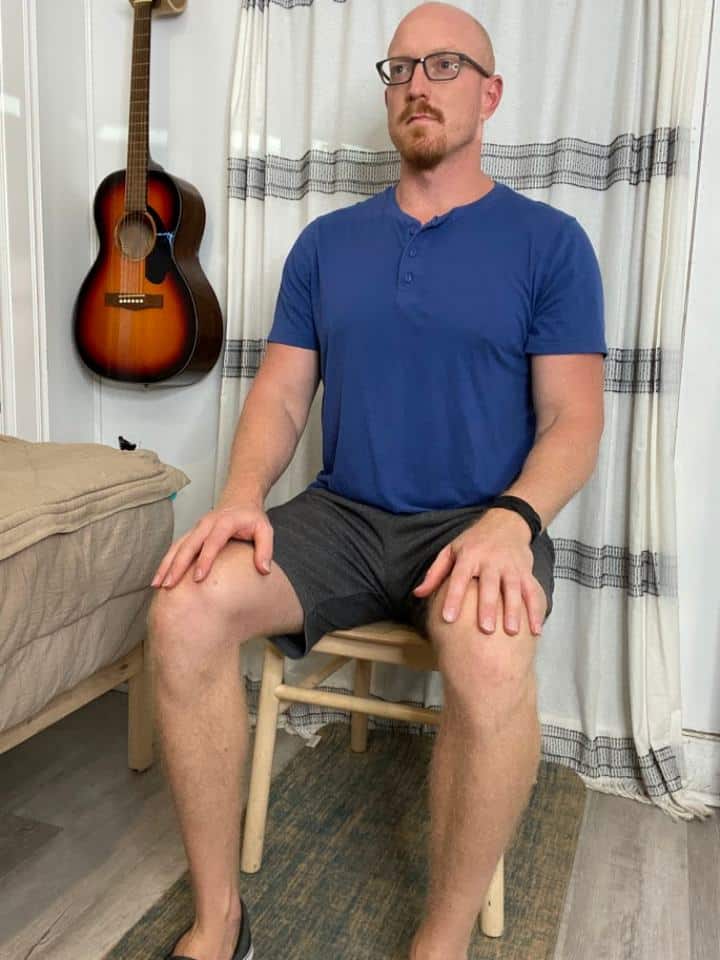

- Seated in a chair, cross the leg to be stretched over the opposite thigh. The ankle should be touching the thigh.
- Keep a nice, straight back.
- Place the same side hand on the inside of the thigh on the leg to be stretched.
- Gently press the thigh down in the direction of the floor.
- Hold for at least 30 seconds or up to 1 minute.
c. Gastrocnemius Calf Stretch:
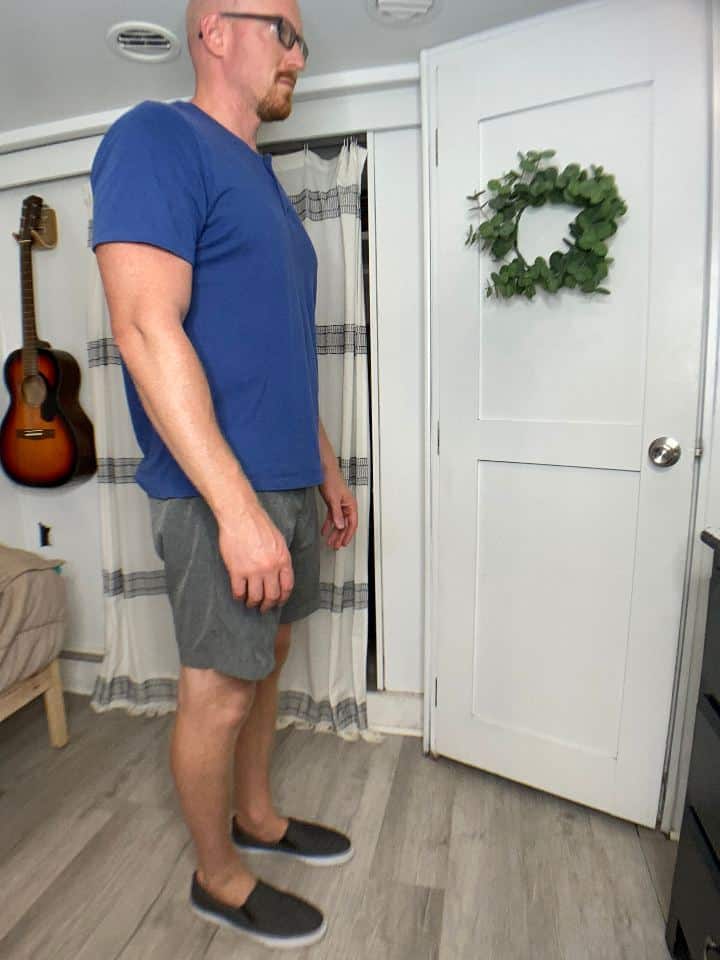
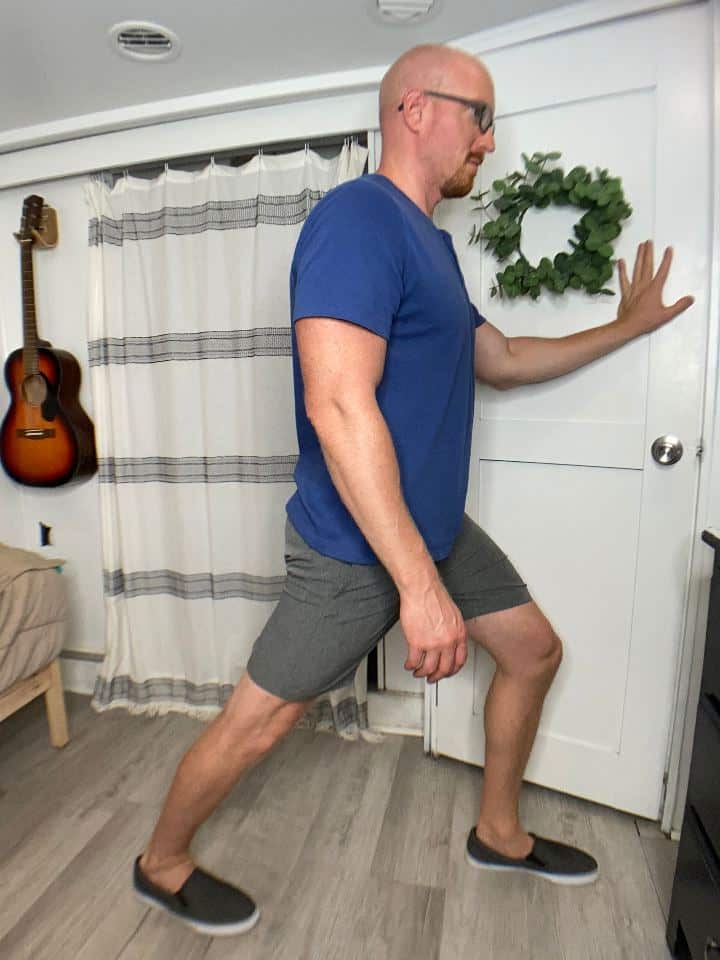
- You may find it more comfortable to place your hands on the wall for this stretch to help with balance.
- Place the healthier leg straight forward and the affected leg straight back into a small lunge.
- Keep the front knee bent and the back knee straight as you lean forward.
- You should feel a stretch in the calf and a little bit into the Achilles tendon.
- Hold the position at least 30 seconds or up to 1 minute, then you can also repeat on the other leg.
Prevention Tips
1. Gradually increase your mileage: If you’re starting a running program or increasing your mileage, be sure to do so slowly. Sudden increases in your running distance can put extra strain on your knees and lead to a runner’s knee. According to a review published in the British Journal of Sports Medicine, increasing your weekly running distance by more than 10% from one week to the next can increase your risk of injury.
2. Avoid overtraining: Finally, listening to your body and giving it the rest it needs is essential. Overtraining can increase your risk of a runner’s knee and other injuries. Make sure to include rest days in your training schedule and pay attention to any signs of fatigue or pain.
When to Seek Professional Help
If you’re experiencing a runner’s knee and these self-care measures aren’t helping, it’s a good idea to see a healthcare provider. They can help diagnose the problem and recommend more specific treatments, such as physical therapy or medication.
Conclusion
In conclusion, a runner’s knee is a common and treatable condition that can be prevented with simple steps. By resting and icing the affected area, wearing the right shoes, using orthotic inserts, strengthening your muscles, stretching, gradually increasing your mileage, and avoiding overtraining, you can keep your knees healthy and pain-free. Happy running!


